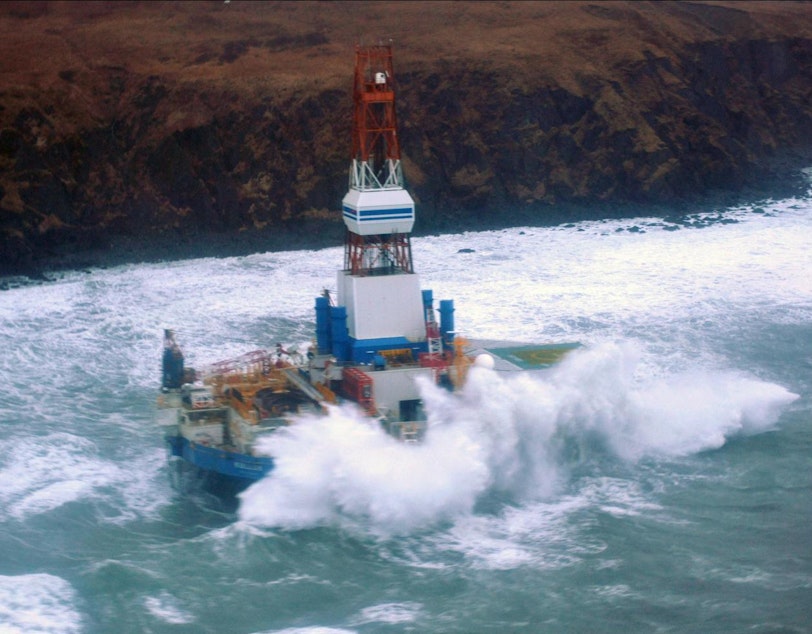Coast Guard Blames Kulluk Grounding on Shell Oil's Complacency, Risk Taking

A US Coast Guard investigation blames Shell Oil's complacency and risk-taking for an oil rig running aground on a remote Alaskan Island on New Year's Eve 2012.
A single tugboat, the Aiviq, was towing an oil rig called the Kulluk to Everett, Wash., in late December when the tug's engines failed. Despite several attempts to corral the wayward rig, the Kulluk's 18 crew members had to be evacuated by helicopter, and the rig ran aground.
The accident dashed Shell's hopes of drilling for oil in the Arctic last year.
The Coast Guard investigation found that Shell's decision to move its cone-shaped oil rig across the Gulf of Alaska in December was influenced by the millions of dollars in state taxes that Shell believed would kick in if the rig stayed in Alaska past the new year.
The Kulluk's final destination was Seattle's Vigor Shipyard. Vigor didn't have space for the rig until February. The Kulluk was to be berthed at the Port of Everett until then.
Sponsored
In a letter accompanying the investigation, Rear Admiral Joseph Servidio said the main cause of the accident was the failure of Shell and its contractors to understand and respect the risks of towing across the Gulf of Alaska in winter.
"I am most troubled by the significant number and nature of the potential violations of law and regulations identified," Servidio wrote, "… including the failure to report marine casualties, failure to report safety-related vessel issues, and improper/illegal bridge and engine room watch-keeping systems."
Servidio said the Coast Guard would be investigating the potential violations. If violations did occur as described in the report, he said "far greater levels of oversight will be required."
The investigation also found evidence that the master, chief engineer and third mate of the Aiviq tug "may have committed" acts of negligence.
On Dec. 22, one day after leaving Dutch Harbor in the Aleutian Islands, the master of the Aiviq emailed a colleague aboard the Kulluk: "To be blunt I believe that this length of tow, at this time of year, in this location, with our current routing guarantees an ass kicking."
Sponsored
Other findings of the investigation include:
- "Tow planners did not recognize the risks, nor adequately plan for a towing evolution of such a unique vessel during the height of winter in the Gulf of Alaska."
- "Mr. [REDACTED], the individual who approved this tow plan had been employed by Shell for approximately six months. He had never reviewed a tow plan within Shell, had not participated in any of the planning meetings."
- "There is no evidence that the towing plan was forwarded to any other federal or state entities for either review or approval. Additionally, the investigation could not locate any federal or state requirements to review or approve such plans."
Shell officials declined to answer questions. Instead, the company issued a three-sentence statement:
"We appreciate the US Coast Guard’s thorough investigation into the Kulluk towing incident and will take the findings seriously. Already, we have implemented lessons learned from our internal review of our 2012 operations. Those improvements will be measured against the findings in the USCG report as well as recommendations from the US Department of Interior."
In March 2013, the Kulluk was loaded on a heavy-lift ship and hauled to Singapore. Last October, Shell officials said the Kulluk would be scrapped. The Kulluk was last spotted in March, under tow from Singapore to China.
Sponsored
The grounding was not the Kulluk's first serious mishap. Vigor Shipyards worker William Shelby fell to his death while retrofitting the tall mast of the Kulluk in Seattle in February 2012.

